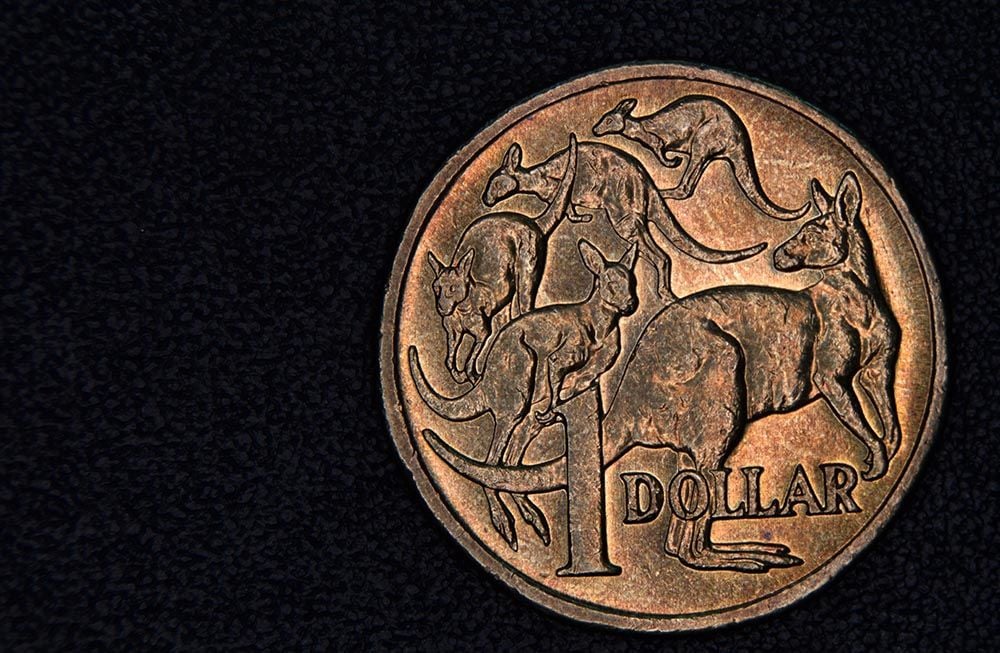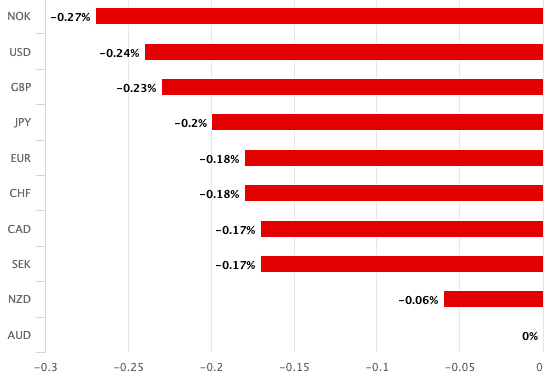Short-Term Australian Dollar Weakness Expected by Analysts
- Written by: Gary Howes
-

Image © Adobe Images
It could be time for the Australian Dollar to give back some of last week's impressive rally say a couple of investment bank analysts we follow.
Foreign exchange strategists at Crédit Agricole and Barclays anticipate weakness in the Australian Dollar over coming days amidst a readjustment of positioning and a 'hawkish' outcome to the midweek Federal Reserve policy update.
The Australian Dollar rose by 2.0% against the Pound in the previous week and 2.50% against the U.S. Dollar, while a gain of 2.30% was recorded against the Euro.
Drivers of the Aussie Dollar's stronger performance was a more generalised improvement in global investor sentiment, crucially much of this stemmed from China where authorities relaxed monetary conditions.
China is Australia's largest trading partner making any Chinese-lead improvements to global sentiment particularly supportive of Australia and its currency.
"AUDUSD gained over 2% last week, reacting to a combination of gains in risk assets, optimism on China growth and position readjustments coupled with a less dovish RBA," says Barclays in a regular weekly currency update.

Above: AUD is already underperforming this week, with the above showing losses on Tuesday 14.
- GBP/AUD reference rates at publication:
Spot: 1.8523 - High street bank rates (indicative band): 1.7875-1.8000
- Payment specialist rates (indicative band): 1.8393-1.8430
- Find out about specialist rates, here
- Set up an exchange rate alert, here
- Book your ideal rate, here
The currency was boosted by Friday’s announcement from the three-day annual Central Economic Work Conference in China where it was announced a priority for next year is ensuring stability.
They also vowed to front-load policies and keep the monetary policy stance flexible and appropriate: this was read as stimulatory for infrastructure, which would ultimately dip into Australia's base metal export basket.
"That’s good news for AUD, which is often used as a proxy for China owing to the countries’ close trade relations," says Marshall Gittler, analyst at BD Swiss Holdings.
The Pound to Australian Dollar exchange rate fell from 1.8859 to 1.8475 last week, the Australian Dollar to U.S. Dollar went from 0.6997 to 0.7168 and the Euro to Australian Dollar exchange rate fell from 1.6134 to 1.5769.
But Crédit Agricole says their 'FAST FX Fair Value Model' now finds the Australian Dollar is 'a sell', as it is left looking overvalued against a host of currencies.
Their modelling finds AUD/USD's 'fair value' has declined from 0.7187 to 0.6899 as "Australian-US rates differential and commodity prices declined last week," says Valentin Marinov, Head of G10 FX Strategy at Crédit Agricole.
Above: Crédit Agricole's fair value / FAST FX modelling.
Secure a retail exchange rate that is between 3-5% stronger than offered by leading banks, learn more.
The bank's model looks to target a move in AUD/USD to 0.6899 in the short-term.
Barclays expects the Australian Dollar to weaken, "reflecting a catch-up after last weeks' surge, and see risks skewed to the downside".
They say global risk sentiment, in part influenced by vaccine efficacy on Omicron variant, should drive the Aussie currency this week.
"Risks from a more hawkish Fed cannot be ignored but we think the incremental channel is more from risk assets rather than from higher rates," says Barclays.
Barclays economists expect the RBA to further taper bond purchases then end quantitative easing by mid-2022 and start hiking rates from November 2022.
But, they say the rates markets are pricing more aggressive normalisation with 1y RBA OIS at 91bp.
If Barclays are right, then the market is wrong and this would deprive the Australian Dollar of support from rates expectations over the longer-term.
